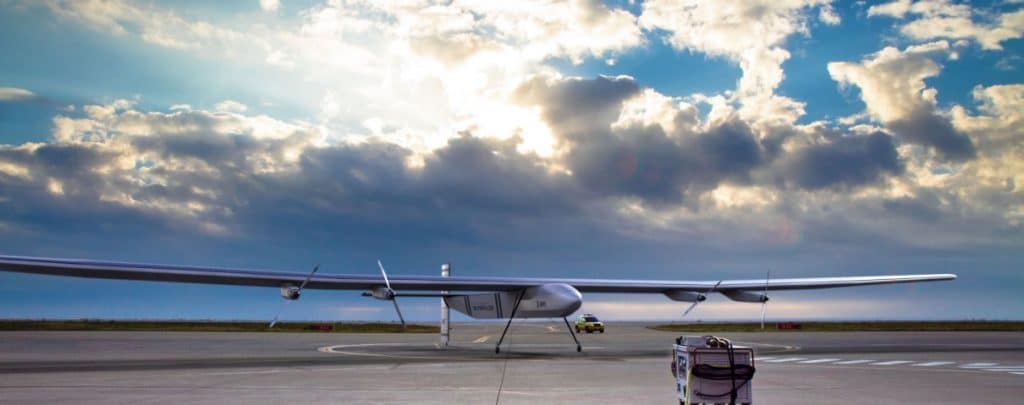According to New Scientist, the US Navy is constructing a long-endurance, unmanned aircraft that could fly for 30-90 days, depending on the intensity of sunlight and the amount of power that its solar panel-lined wings can generate.
Skydweller Aero is a US-Spanish aerospace company that uses technology developed for the experimental Solar Impulse 2, a crewed solar-powered aircraft that circumnavigated the Earth from 2015 to 2016. The company acquired the right to use the technology in 2019 and converted the design into the Skydweller by upgrading it slightly.
Even though its first flight was in December 2020, the Skydweller does not have a formal name yet, “Since we have had multiple flight tests with incremental advancements towards autonomous flight,” says the company.
The aircraft consists of a 236-foot wingspan with 2,900 square feet of photovoltaic cells that generate up to 2 kilowatts of power. It can hold up to 800 pounds of radar and camera equipment. The aircraft is designed to operate at altitudes ranging from 30,000-45,000ft and weighs around 2,495kg.
“We are currently following our plan to test autonomous flight, then autonomous take-off, then autonomous landing, and finally our first fully autonomous flight,” Skydweller Aero CEO Robert Miller told New Scientist. “Once all this has been proven, we will move into long-endurance testing with the goal of operating for 90-plus days.”
The US Navy is currently operating much bigger drones that can remain airborne for just 30 hours during maritime patrols. Longer flights, however, could prove particularly useful on a wider range of missions.
The US Navy aims to utilize long-endurance drones for missions that stay in the air for 30 hours or more. This could allow them to keep an eye on the targeted for a longer span of time. It could also help spy satellites and have predictable orbits.
“For us, if you’re flying 90 days with one aircraft, that’s two take-offs and landings versus… hundreds,” Skydweller Aero co-founder John Parkes told Aviation Today last month.
In addition, Skydweller Aero company aims to modify the aircraft with hydrogen fuel cells to serve as a standby in case of bad weather.

